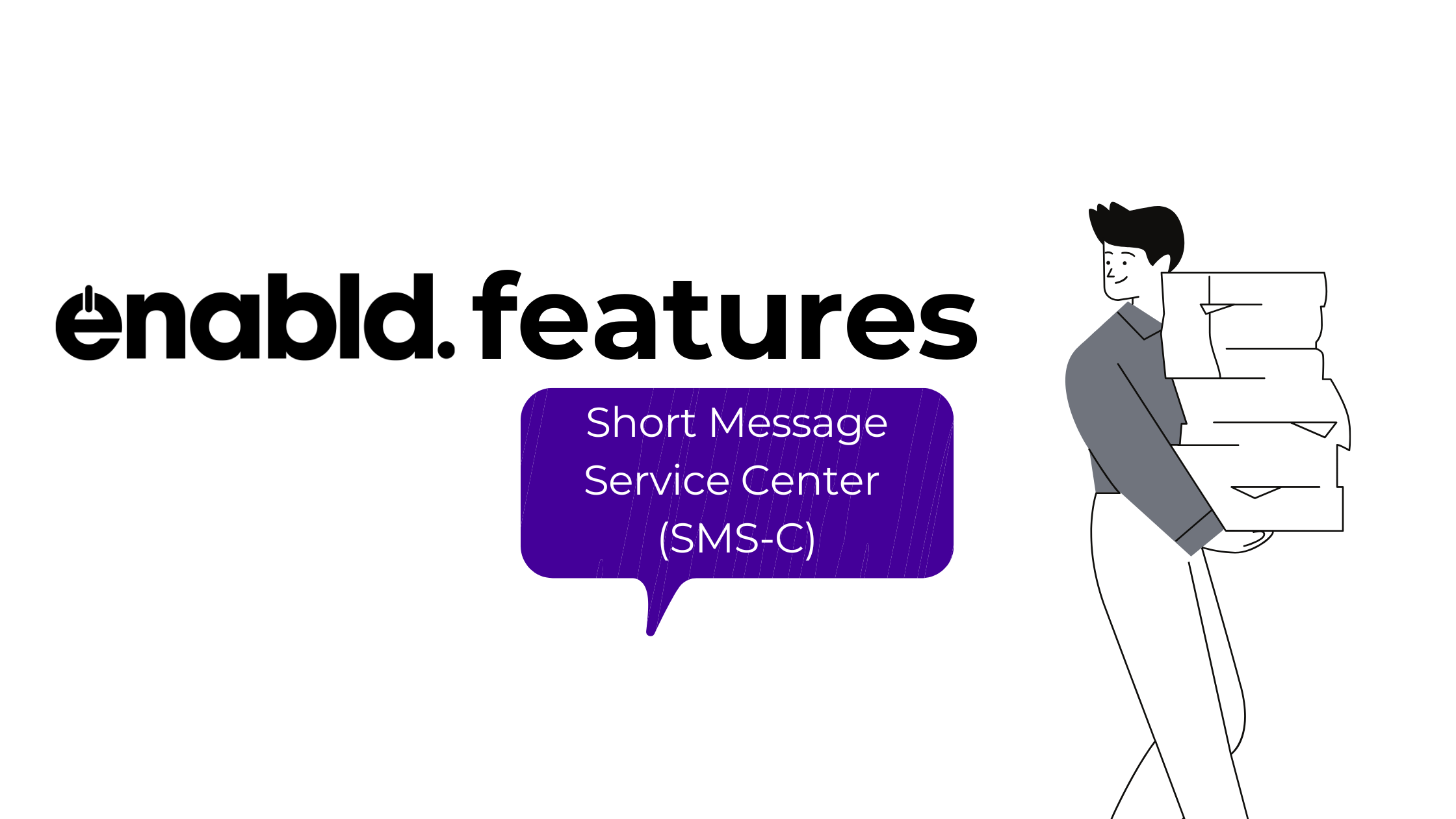Thank you for joining us for another edition of “What’s cooking at Enabld”! This time we’ll continue our exploration of Enabld’s advanced messaging capabilities with an overview of the Short Message Service Center.
What is a SMS-C
As most of you know, the primary function of SMS-C is to manage the routing, storage, conversion, and delivery of SMS messages, while also ensuring that each message is associated with a unique timestamp in the database. Ensuring proper date/time data is very important for your campaign ROIs. For example, when a message is sent to a recipient who is unavailable, say their phone is turned off, the SMSC temporarily stores the message and forwards it once the recipient becomes available or when the message’s expiration period has elapsed. In short, the SMSC plays a crucial role in regulating and optimizing the process of SMS message delivery in mobile networks, but let’s get a more detailed look, shall we?
How a Short Message Service Center works
SMS-C, or Short Message Service Center, is a crucial component of any SMS infrastructure used for text messaging in mobile telecommunications networks. This system acts as a store-and-forward mechanism for text messages, which means it receives messages from the sender’s device, temporarily stores them, and forwards them to the recipient’s device. In the context of a Communication Platform technology, SMS-C allows developers and businesses to send and receive SMS messages programmatically using APIs, which is essential for reliable and scalable SMS services.
By integrating with a CPaaS provider’s SMS-C through APIs, businesses can easily send automated SMS notifications, alerts, and marketing messages to their customers, as well as receive inbound messages and build two-way SMS communication channels. With advanced features such as message tracking, analytics, and personalization, businesses can enhance customer engagement and loyalty, while increasing the effectiveness of marketing campaigns.
SMS-C is also critical for the 2FA process, which provides an additional layer of security to online services. By using SMS-C as a secure and reliable channel for delivering 2FA codes, businesses can prevent unauthorized access to sensitive information. CPaaS providers that offer SMS-C functionality can help businesses implement 2FA quickly and easily, without having to build their own SMS infrastructure.
SMS-C, Efficiency and Message Routing
With the increasing globalization of businesses, reliable and scalable SMS infrastructure is essential to reach customers in multiple countries and regions. CPaaS providers that offer global SMS-C functionality can help businesses deliver messages to international destinations quickly and reliably, using advanced features such as message routing, automatic message translation, and intelligent message delivery. Advanced message routing algorithms can also help businesses achieve high message delivery rates, reduce latency, and minimize the risk of message failure or loss. By leveraging intelligent message personalization and analytics capabilities, businesses can create and deliver personalized messages that resonate with their customers, optimize their messaging strategy, and improve the ROI of their messaging campaigns.



